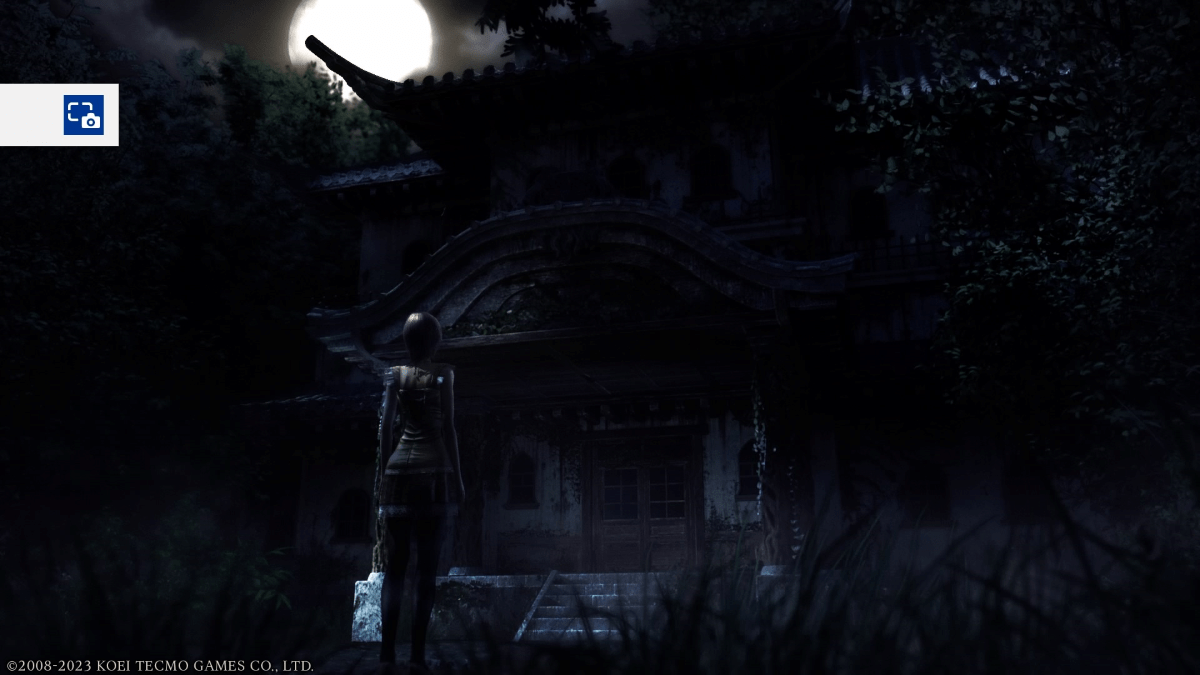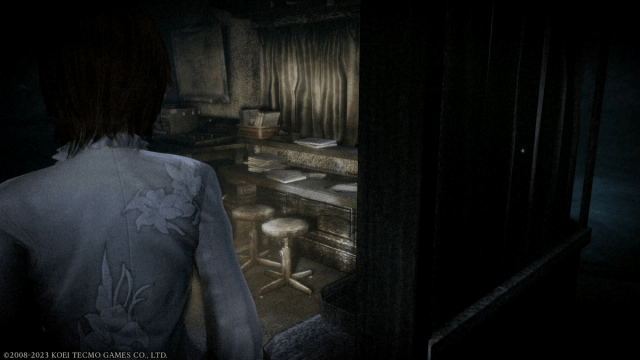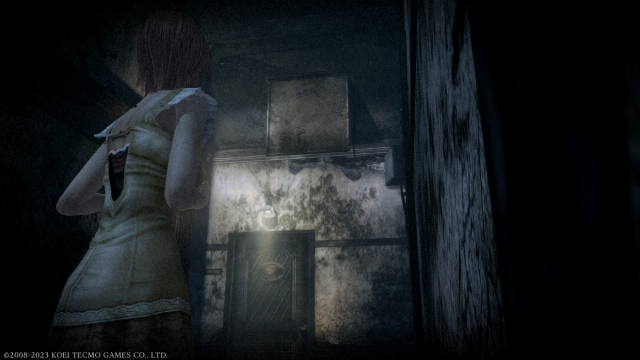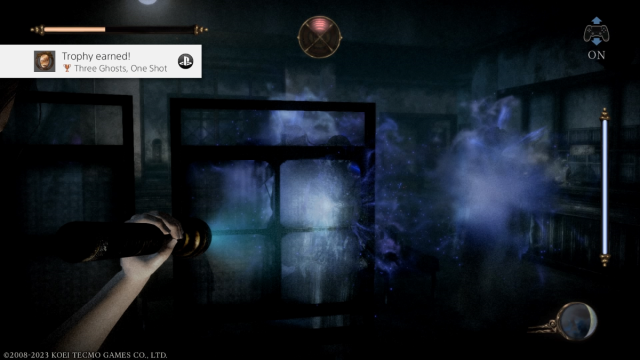Fatal Frame: Mask of the Lunar Eclipse Review | Capturing Early 2000s Nostalgia
These games make me lose track of what year it is

In a mist of foggy memories, a melody plays over flashes of images; young girls dancing in ceremonious masks to the beat of a drum around a woman who crumbles over in pain. The only recollection of an incident long since past, the lingering danger rears its ugly head once two of those five girls are found dead within their homes on the very eve of the incident ten years later. Driven by fear and loyalty, survivors Ruka, Madoka, and Misaki return to their home island of Rogetsu to uncover the secrets of what happened that fateful night when all five girls disappeared into the depths of the caves underneath the Haibara hospital.
Related: What is Fatal Frame: Mask of the Lunar Eclipse? – Answered
Fatal Frame: Mask of the Lunar Eclipse was originally released on the Wii, and as much as I love horror games now, there’s no way I’m putting myself through that much misery firing up a console threatening to explode any day now. Luckily, Koei Tecmo has been in the business of remaking its classic games first released on PlayStation 2 and the Wii to fit today’s modern consoles. As an avid fan of the Fatal Frame franchise, I’m all too excited to delve into the series’ fourth installment to experience the terror and anticipation for myself.
True Fear Lies in the Atmosphere

The fun thing about Japanese horror games is that you won’t find all the scares in being jumped by ghosts. This game prides itself on the buildup of expecting the worst out of every corner you turn. The creaks of the deteriorating building threaten to fall apart on top of you, but is it old age or are the specters stepping ever closer? Their voices reach up to the player in between the wooden floors and in hazy breaths against the windows you pass. I found myself cursing at the creaking building more than the ghosts appearing in adjacent hallways. At least the ghosts serve you points if you manage to get their pictures.
One of the highlights the director and producer of the game mentioned is the remake offers more detailed models and cutscenes as well as brighter rooms, making it easier to experience the finer details in this terrifying space. Like seriously, why was there a chute above the rooms with handprints on it?! What was the reason?! They never mention it, but heck, it’s there!

The graphics in Mask of the Lunar Eclipse have indeed improved with character models showing finer details, softer features, and attention to the way they interact with their environment. Misaki dodges hanging arms in Ayako’s room (in the middle of a boss battle, much to my frustration). Kirishima brushes aside the curtains of the Haibara Institution that separate rooms. Not only do these moments tickle the part of my brain that goes, “Oh, physics!” but it also forces the player to confront a fear of not knowing what’s on the other side.
Yet another key aspect exploited just about everywhere in Mask of the Lunar Eclipse: time taken reaching out for items with the threat of specters making a grab for you, having to wait for the opening door before you can duck through it, and pointing the camera’s viewfinder in the direction of a ghost right when they attack to take a “Fatal Frame” for extra damage. Of course, I’m too much of a wimp and wait for the charge rather than the ghosts’ attack. This game has way too much fun playing with your ever-fraying nerves in more ways than one.
New System, Old Game Mechanics
Ah… PlayStation 2 era controls. Reminds me of my childhood with how clunky they can be. The infamy of Fatal Frame’s funky controls is just as popular as the storied franchise itself. Whether it’s because of having to convert Wii controls to more traditional consoles or because I haven’t touched a PlayStation controller in a hot year or two as a PC gamer, I was struggling those first few hours. Eventually muscle memory helped, but there were times when strafing and pivoting got me spinning in my own chair. At times, it just didn’t feel like the controls wanted to obey and that’s not the best when you’re trying to run from a ghost child.
In the Wii version, the Camera Obscura was interesting in that it used motion controls to point the viewfinder. I found this could go 50/50 in helping or hindering your shot. There were times when it drifted off of the ghost even when I was hitting the Lock On button. When it worked, it helped you keep the viewfinder on the ghost even when it dodged to the side and helped with small fixes when I couldn’t quite pinpoint the ghost. In the end, I mostly relied on the joysticks to maneuver both the character and the camera.

Now, the Camera Obscura is a highlight. In terms of weapons provided, the camera was the Master Sword once it was leveled. The flashlight on the other hand can go fuck itself. The Spirit Stone Flashlight is another weapon introduced in the Fatal Frame franchise that blasts ghosts with the light of the moon to mass-banish specters similar to a shotgun. A shotgun with a very long load time, a camera attachment that needs to be taken off in the menu, and eventually just runs out of bullets once the moon icon in the bottom right-hand corner is eclipsed. Once it levels up it gets better, but the crux to it all is the flashlight’s tutorial opens with a room full of specters all ready to get their hands on Kirishima. And it’s only due to the man’s saving grace of long legs that we were able to even dodge around the room.
That’s another fun thing about Fatal Frame, the run cycles are always a joke except when it comes to the men. Ruka, Madoka, and Misaki’s runs are more like a leisurely jog through the park despite having to avoid ghosts ready to ruin their day. It’s not like the map is so big it requires them to make great strides on their journey, but when the Autosave only works part of the time, having a bit of brisk in your step would’ve helped.
Related: Every Fatal Frame Game – Listed
When I first learned that the Autosave didn’t work quite how I expected, I didn’t lose that much progress, but it was enough to make me pause for a moment. Not only would I have to completely explore a total of three rooms, but also two side ghosts that needed to be defeated before I died, but I realized I would have to take a lot more trips to the Save Point. And that meant suffering through the terribly slow run, including having to take a flight of stairs that only makes you slower even if you’re running!
I swear… I love this game, but man I was asking for it when a remake came back with all of its clumsy mechanics.
Pros:
- Tense Atmosphere thanks to sound design and layout
- Pretty interesting storyline, reminiscent of its era
- Side story ghosts are great additions to an already haunting tale
Cons:
- Them janky controls, also from its era
- Tight or small spaces for ghost battles
- That gosh-dang flashlight and its camera function (who puts a camera on a flashlight?!)
Score: 7.5
A copy of this game was provided by the publisher for review. Reviewed on PS4.
